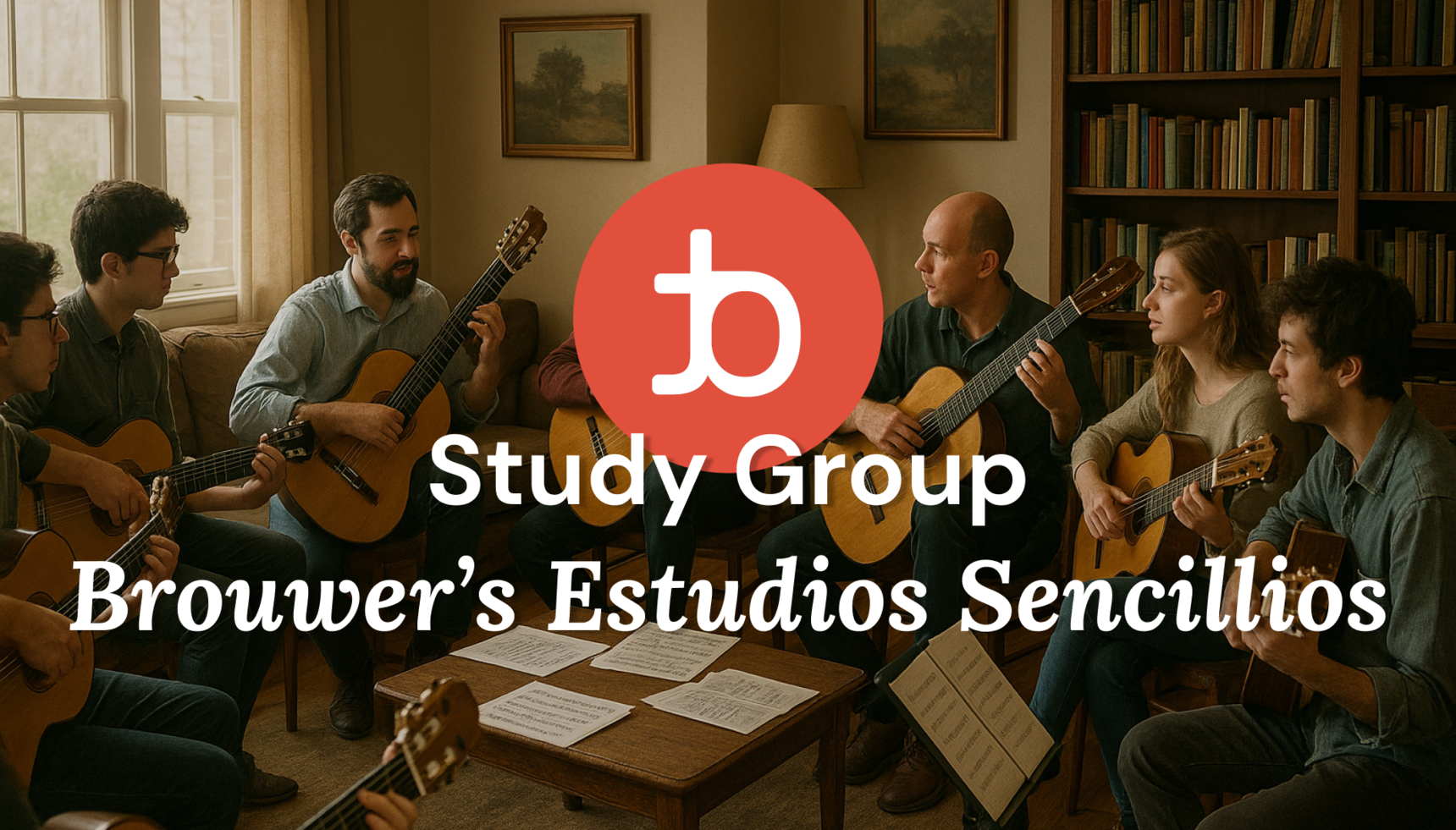Leo Brouwer's Estudios Sencillios!

Welcome to our next Study Group — a collaborative, peer-led dive into a beautiful piece of music over the course of two weeks.
This time, we’re diving into the methodical riches of Brouwer’s Estudios Sencillos 1–10!
This is not a course or a class — it’s a space for mutual exploration, discussion, and shared progress. I’ll be learning the piece alongside you (again — it’s been a while!), and I’m excited to discover new things together.
🗓️ What to expect:
Over the next two weeks, we’ll focus on:
🎯 Fingerings and technique
🎯 Methodical background
🎯 Interpretation and expressive choices
🎯 Your own questions and perspectives!
We’ll also meet for two live Zoom sessions to share progress, chat about challenges, and nerd out over all things Brouwer.
✅ How to participate:
Sign up through the Forum
Grab your score of the Estudios Sencillos
Introduce yourself below!
Join the prompts and discussion
Share your thoughts, ideas, or a clip of your playing
📅 Live Zoom Calls:
🗓️ Dates: July 28th – August 8th
📫 Sign-Up
48 replies
-
I am in. Looking forward to participating in this group.
-
#1 was the very first classical piece I ever tried to play. I found it as a teen when some rock guitar magazine reprinted it with a lesson to try to broaden their reach. Coming after tabs of The Clash and The Police (bands I still love), it seemed so abstract and avant-garde, and the score made no sense with all the different languages and cryptic symbols. It was intriguing, though, and it led to me eventually getting hooked.
-
I'm joined too. This is the version that I have: Leo-Brouwer-20-Estudios-Sencillos-.pdf
-
I am really looking forward to this! I have been working on the Studies (slowly) for almost a year. I'm currently deep in #8!
-
I've been chosen the 5° study, I like the Montune rhythmic, and is my style to accompaniment in the Cuban Three.
-
Let's kick this off today!!!
-
Hey !
In this video, I take a close look at Estudio No. 1 by Leo Brouwer — the gateway into one of the most iconic etude cycles in modern guitar repertoire.I’m using the beautiful edition by Frédéric Zigante (though there are others like the Eschig or Leo's own Espiral Eterna editions). For this video, I focused on just the first study, which already opens up a whole world of right-hand technique and Cuban guitar school methodology.
🔥 What I cover in the video:
The fingering choices I personally use
Why I don’t think this piece should be turned into a “play it as fast as possible” challenge
How this etude is meant to be accessible — Leo Brouwer himself said he was delighted to see children playing it as intended!
I’d love to hear:
What fingerings do you use for this etude?
Did you follow a particular edition, or create your own approach?
Any tricky spots where you made deliberate changes?
Let’s compare notes! Always fun to see how different players approach the same piece 🎶
-
Hi, all! I'm new to these studies. I'm going to try out 5.
-
For #1, I'm curious about interpreting the dynamics? Should they be applied to the melody and accompaniment or just the melody, keeping the accompanying notes at the same level throughout the piece?
-
and study group participants, here's a quick take I've done for Estudio #1 (as you can see I wanted to share my computer screen via my soundboard! 😂). I mostly only changed the fingering in the middle part (before the opening part is back), I'm using the one Martin doesn't like (instead of moving parallel 1-3) and I really enjoy how it flows. I'm not playing it as fast as it could be but also not too slow... I'm not really following the indicated dynamics, I'm flowing more with the sound and use some agogic on specific notes to enhance the phrase a bit, and I feel it more fluid and legato than marcato and strong. Let me know your ideas!